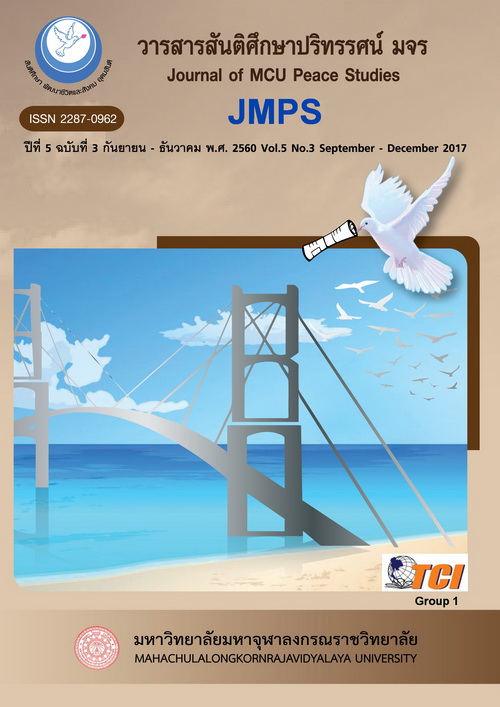The Development of the Buddhist Integrative Operational Model for Solving the Drug Addiction in Secondary Schools
Main Article Content
บทคัดย่อ
The purposes of this qualitative study were 1) to study the concept and Buddhist teaching to solve drug addiction, 2) to study the current state of drug addiction in secondary schools, and 3) to present a working process to solve drug addiction in secondary schools according to Buddhist integration. The study was focused on three model schools, which accomplished in working process gained from Purposive Sampling: Kosumwittayasan School, Chonabotsuksa School, and Phuprawittayakom School. The tool was interview collected by In-depth Interview, Group Discussion, and Workshop and presented by Descriptive Analysis.
The research result revealed that drug addiction was a problem in Thailand that youths were a crucial vulnerable group. To resolve the problem, a school had to educate good popularities and give appropriate suggestions for students with applying Buddhadhamma which were three Virati (abstinence), Six Vaddhana-mukha (channels of growth), seven Sappàya (beneficial or advantageous conditions), and three Kosalla (skill). Before the process to solve the problem, some students involved drug addiction, which affected to their behavior and studied result. The problem, however, was decreased after running the solution: hence, they had better desirable characteristics. A school should analyzed the problem to plan and proceed to have the suitable integration with seven dimensions: prevention, follow-up, treatment, surveillance, management, community and connection cooperation, and moral promotion.
Article Details
ทัศนะและความคิดเห็นที่ปรากฏในบทความในวารสาร ถือเป็นความรับผิดชอบของผู้เขียนบทความนั้น และไม่ถือเป็นทัศนะและความรับผิดชอบของกองบรรณาธิการ ยินยอมว่าบทความเป็นลิขสิทธิ์ของวารสาร


